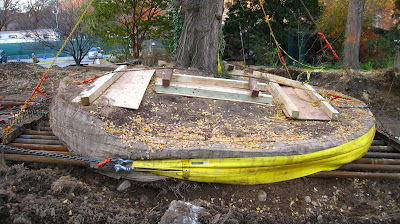My 3 year old hibiscus tree only got two flowers this year and they bloomed in October. All summer I had it outside in CT and it had beautiful green leaves but no flowers.
Last year it flowered a lot in August. I brought it in for the winter and kept it near a northern window where it lost its leaves but grew them back before the spring.
I now have it in the same window but am not sure what to do with it so that it will bloom in the summer next year.
I appreciate any advice. Diane

Hibiscus lutea braided
Some tips on care for your hibiscus…
Hibiscus are tropical plants that must have at least a couple of hours of direct sunlight everyday, and more importantly warmth. A bright south or west facing window is the best. In the winter be careful your plant does not get a draft, this can cause it to drop its leaves.
This plant likes water but does not like to be wet. A tip that may help you is to water the plant with slightly warm water in the winter.
It is also a good practice to prune your hibiscus around August to October. Prune 2 or 3 nodes (the point where leaves and buds arise from) down the branches, this will encourage fuller growth and more budding.
Lastly, it is a good idea to feed your hibiscus during the growing season. Growing in a container, a plant will quickly use up its resources. This will help new growth and bud formation. A standard fertilizer containing nitrogen(N), phosphorus(P) and potassium(K) will be fine. Nitrogen helps a plant develop healthy, green foliage, while potassium will encourage good root development and improved flowering and potassium helps a plant build up storage for a dormant period.
I hope this helps, keep us updated.
 Plant Type: Herbaceous perennial
Plant Type: Herbaceous perennial



















